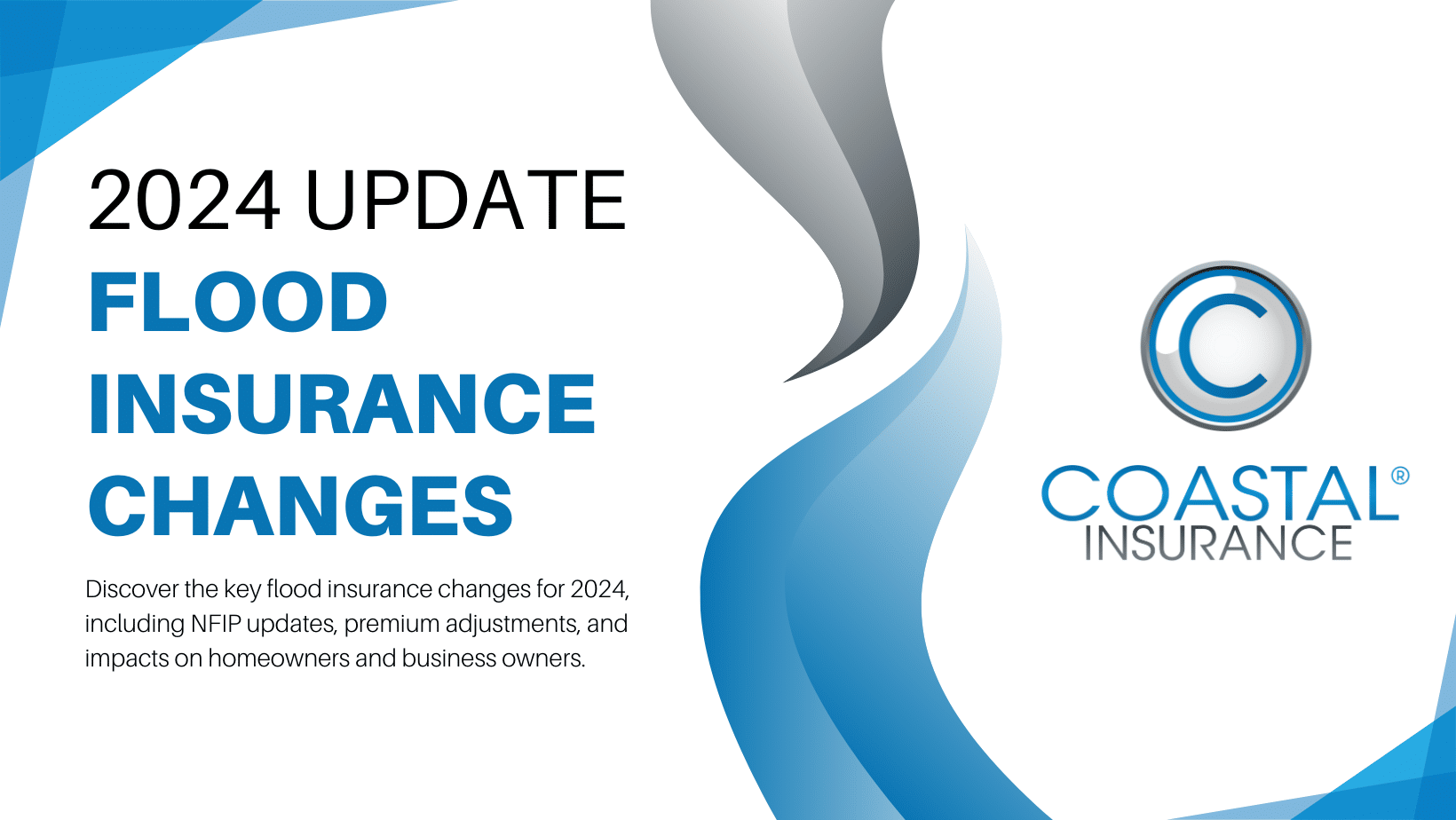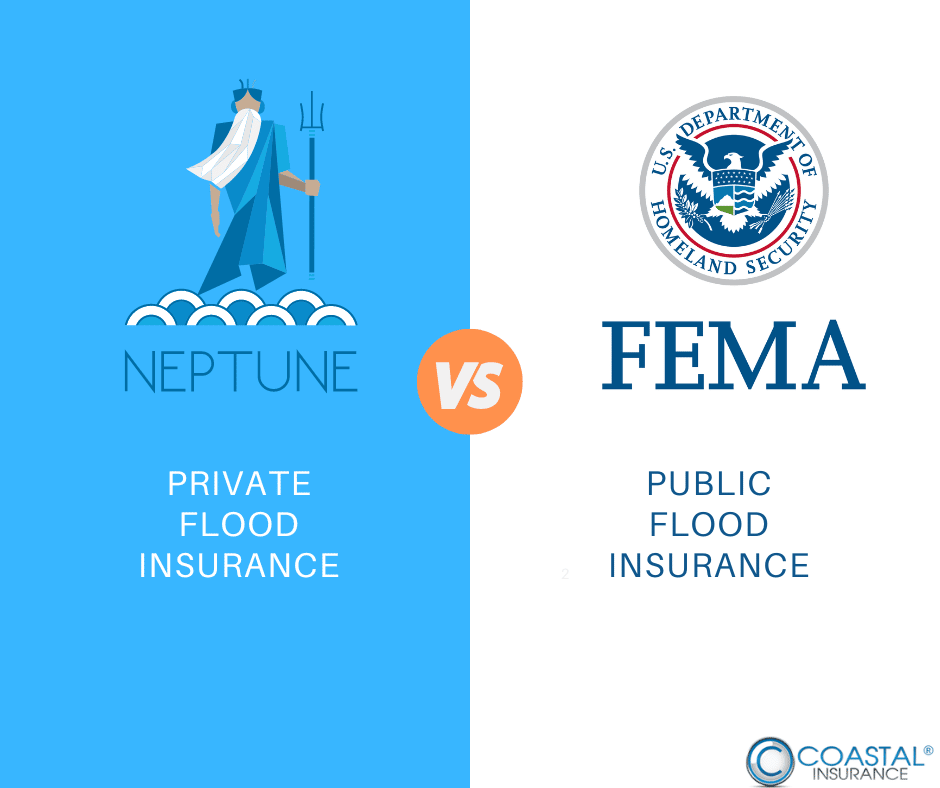
The flood insurance market continues to evolve significantly, with the latest updates from the National Flood Insurance Program (NFIP) taking effect in April 2024. These changes, part of a series of revisions detailed in the most recent NFIP Flood Insurance Manual, are designed to make flood insurance more accurate and tailored to specific property risks. We’ve seen changes almost every year, with the last notable change back in October 2021, with the launch of Risk Rating 2.0.
Key Changes in NFIP Policy from April 2024
- First Floor Height (FFH) Adjustments: One of the crucial updates involves the calculation of the First Floor Height (FFH) for buildings with a crawlspace, including subgrade crawlspace foundations. From April 2024, the FFH for these buildings will be determined from the first floor above the crawlspace, impacting policy premiums for both Pre-FIRM and Post-FIRM constructions across all zones.
- Renewal Notice Revisions: The NFIP has renamed the renewal Final Notice to Expiration Notice and updated the content and requirements for these notices. These notices will also include information about the Annual Increase Cap Discount where applicable, enhancing transparency for policyholders during renewals.
- Community Rating System (CRS) Impacts: Adjustments to the CRS class of a community will now directly impact NFIP policy discounts, potentially leading to premium increases that exceed the annual cap at the first policy renewal following a CRS class change.
Updates to the NFIP Flood Insurance Manual
The Flood Insurance Manual has seen several updates, including:
- A restructured Introduction section with additional appendices for better clarity on definitions and documentation requirements.
- Revised guidelines for determining FFH, reflecting the removal of Pre-FIRM/Post-FIRM and zone distinctions.
- Updated eligibility criteria for non-residential floodproofing discounts and clarified methods for documenting Building Replacement Cost Value (BRCV).
- Enhanced guidance on policy cancellations and new scenarios for non-residential buildings in the Sample Scenarios appendix.
Implications for Homeowners and Business Owners
These changes signify a shift towards more detailed and property-specific underwriting, which could mean adjustments in policy premiums for many. Homeowners and business owners should be aware of how these updates might affect their flood insurance rates, especially those in CRS communities or with buildings that have crawlspaces.
The recent updates to the National Flood Insurance Program (NFIP) guidelines and regulations have profound implications for homeowners and business owners alike, marking a significant transition towards more detailed and property-specific underwriting. This shift is designed to refine how risk is assessed and ensure that premiums more accurately reflect the actual flood risk of individual properties. As such, both residential and commercial property owners should carefully consider how these changes may affect their flood insurance coverage and costs.
Understanding the Shift to Property-Specific Underwriting
Previously, flood insurance premiums were often determined by broader zone-based metrics that applied to large areas, with less consideration for specific property characteristics beyond basic factors like elevation and building type. The latest changes, however, incorporate a more granular approach. For instance, the adjustment in how First Floor Height (FFH) is calculated—now determined from the first floor above the crawlspace for buildings with a crawlspace foundation—can substantially affect premium calculations. This is particularly relevant for properties categorized under Building Diagrams 8 or 9, whether Pre-FIRM or Post-FIRM and irrespective of the flood zone. Such specifics can lead to significant changes in insurance costs depending on the unique features of a property.
Impact on Premiums
For homeowners and business owners, these changes can lead to either increases or decreases in flood insurance premiums. Properties that have been under-assessed for risk in the past may see a rise in premiums, while those over-assessed may benefit from reduced rates. This makes it essential for property owners to understand the specifics of how their properties are evaluated under the new guidelines. To prepare, see our article Top 5 Hacks To Lowering Your Flood Insurance Cost.
In CRS (Community Rating System) communities, for example, updates to the CRS classification can influence the discount received on flood insurance premiums. If a community’s CRS class is downgraded, property owners within that community might face higher premiums at the next renewal, even if their individual property risk has not changed. Conversely, an upgrade in CRS classification could result in lower premiums for all insured properties in the area.
Special Considerations for Properties with Crawlspaces
The new emphasis on accurately calculating the FFH for properties with crawlspaces could also lead to substantial premium adjustments. As the FFH is now measured from the first floor above the crawlspace, properties with lower floors could be deemed at higher risk, affecting their flood insurance rates. Property owners with such features should consult with flood risk assessment professionals to understand the potential financial impact and explore mitigation measures, such as retrofitting crawlspaces to comply with floodplain management regulations.
The Importance of Staying Informed and Proactive
It is vital for property owners in potentially affected areas to stay informed about these changes. Understanding the updated NFIP guidelines and how they apply to individual properties is crucial. Property owners should regularly review their flood insurance policies and consult with insurance professionals to ensure that their coverage remains adequate and cost-effective.
Additionally, as the flood insurance landscape evolves, there may be opportunities to switch to different insurers or policy types that offer better rates or more suitable coverage. With the growing number of private market insurers, property owners have more options than ever before. These insurers often use advanced modeling techniques that might result in more favorable terms based on an individual property’s risk profile. Read our complete guide on private flood insurance for more details.
Preparing for Future Flood Risks
Lastly, with the increasing variability in weather patterns and rising sea levels contributing to unpredictable flood risks, both homeowners and business owners must consider future risks when selecting or renewing flood insurance. They should also implement practical measures to mitigate potential flood damage, such as elevating electrical systems, installing flood barriers or shields, and ensuring proper drainage around the property.
Why Consider Private Market Flood Insurance?
While NFIP remains a fundamental provider of flood insurance, the evolving private market continues to offer competitive alternatives. These options may provide:
- Higher coverage limits and more customizable policies.
- Potentially lower premiums for comparable or better coverage.
- Flexibility in choosing deductibles to balance out-of-pocket expenses and annual premiums.
Higher Coverage Limits and Customizable Policies
One of the most significant benefits of private market flood insurance is the ability to offer higher coverage limits. NFIP policies have set coverage caps which might not fully cover the replacement costs of a home and its contents. Private insurers, on the other hand, often provide coverage limits that can match or exceed the actual value of the property and belongings, offering more comprehensive protection against flood damage. This is particularly beneficial for owners of high-value properties, where the NFIP’s maximum coverage limits of $250,000 for residential properties and $500,000 for commercial properties may be insufficient.
Moreover, private insurers offer more customizable policies that can be tailored to the specific needs and risk profiles of individual properties. Policyholders can opt for add-ons and adjustments that better match their circumstances, such as coverage for temporary living expenses or the inclusion of outdoor properties and basements, which are often excluded under NFIP policies.
Lower Premiums for Comparable or Better Coverage
Private flood insurance may also be more financially attractive. Because private insurers use more advanced and precise risk assessment models than those traditionally employed by the NFIP, they can often offer lower premiums for comparable or even superior coverage. These models take into account a wider range of factors, such as local topography, recent weather patterns, and property-specific mitigation measures, which can result in more accurately priced premiums reflecting the true risk to the property.
Additionally, the competitive nature of the private insurance market drives insurers to offer more attractive rates to gain or retain customers. This can be especially advantageous for homeowners living in moderate- to low-risk flood zones who may be overpaying for NFIP coverage that doesn’t fully reflect their actual risk level.
Flexibility in Choosing Deductibles
Another critical advantage of private market flood insurance is the flexibility it offers in terms of deductibles. Higher deductibles can significantly lower the cost of premiums, making flood insurance more affordable for many homeowners and business owners. This flexibility allows policyholders to take on a level of out-of-pocket risk that they are comfortable with, in exchange for lower annual costs. For those in lower-risk areas who still wish to have coverage “just in case,” opting for a higher deductible might make private insurance a particularly attractive option.
Speed of Service and Claims Processing
Private insurers are also often able to process claims more quickly than the NFIP, thanks to fewer bureaucratic hurdles and the use of technology in claims processing. This can be crucial in post-disaster situations where accessing funds swiftly can make a significant difference in recovery times. Faster claims processing helps policyholders to start repairs and replace damaged items sooner, reducing the overall impact of the flood on their daily lives and businesses.
Regulatory Considerations
It’s important for policyholders to understand that while private flood insurance policies are subject to state insurance regulations, they are not backed by the federal government like the NFIP. This means that while they often offer more competitive terms, they also require careful consideration regarding the insurer’s financial stability and reputation.
Looking Ahead: Preparing for Policy Renewals
With the NFIP’s shift to more granular policy adjustments and the introduction of new documentation and renewal notice requirements, policyholders should prepare for their upcoming renewals by consulting with insurance professionals. Understanding these changes and how they impact individual policies is crucial for maintaining adequate flood coverage.
Importance of Professional Guidance
Given the complexities associated with the updated NFIP regulations, consulting with insurance professionals becomes even more crucial. These experts can provide valuable insights into how changes in the program might affect individual policies. For instance, the introduction of new guidelines for calculating First Floor Height (FFH) could significantly impact premium rates, especially for homes with crawlspaces. Insurance agents or brokers with expertise in flood risk can help policyholders re-evaluate their property’s risk level under the new rules and decide whether adjustments in coverage are necessary.
Review and Update Coverage as Needed
As policy renewal approaches, it’s also a good opportunity for policyholders to review their current coverage limits and ensure they are still appropriate given any new valuations or property improvements. Changes in local flood maps or a property’s designated flood zone can also affect insurance requirements and premiums. Policyholders should check if their area’s flood risk has been re-assessed, potentially qualifying them for different coverage terms or prompting a need for additional protection.
Prepare for Documentation Changes
With the NFIP’s updates, there are also changes in the documentation required at the time of renewal. Policyholders should be prepared to gather and provide any new documentation that may be required under the latest guidelines. This could include updated elevation certificates, proof of compliance with local floodplain management regulations, or documentation of any mitigation efforts that have been undertaken to reduce flood risk. Being well-prepared with the correct documents can streamline the renewal process and avoid delays.
Anticipate Financial Adjustments
Understanding the financial implications of renewing under new conditions is vital. With the NFIP implementing changes that could lead to premium increases or decreases, budgeting for these potential adjustments is crucial. Policyholders might also want to explore whether setting aside additional funds for a higher deductible could be advantageous, reducing annual premium costs while still maintaining robust coverage.
Embrace Proactivity and Continuous Learning
Finally, in an ever-evolving insurance landscape, embracing a proactive approach to learning about flood risk and insurance options can offer long-term benefits. Attending local seminars, participating in community preparedness meetings, and subscribing to updates from flood risk and insurance resources can provide ongoing education and preparedness tips. Being informed not only aids in making sound decisions at renewal time but also enhances a policyholder’s ability to respond effectively in the event of a flood.
By actively engaging in the renewal process and adapting to the new norms set by the NFIP, policyholders can ensure they maintain adequate, cost-effective flood coverage that aligns with both their property needs and the latest regulatory standards.
Get Expert Guidance from Coastal Insurance
Ready to navigate the updates to flood insurance for 2024? At Coastal Insurance, our licensed advisors are standing by to tailor solutions that specifically address your needs. Ensure your property is protected against flood risks by reaching out to us today. Discuss your current flood insurance policy, explore new options, or compare quotes from leading insurers in the market. Act now to secure the coverage that best fits your circumstances and budget. Contact Coastal Insurance for a consultation or visit us online to learn more about how we can help you stay prepared.

About the Author
David W. Clausen is the CEO of Coastal Insurance Solutions. With over 20 years' experience and over 1 billion insured, David and Coastal Insurance Solutions are the recognized leaders in high net worth insurance. For the fifth consecutive year, David Clausen has been awarded Top Producer by Insurance Business America. David is a trusted high net worth insurance expert who’s published more than 200 articles. His articles & press releases have generated over 500K pageviews and has been featured on blogs such as Google News, Yahoo Finance, CNBC, Market Watch, Fox, The New York Times, etc. David founded Coastal Insurance Solutions in 2001 after earning a BBA from the State University of New York College at Oswego.
![IBA Top Retail Brokers 2024 Medal[88] IBA's Top Retail Broker 2023](https://coastalinsurancesolution.com/wp-content/uploads/2024/07/IBA-Top-Retail-Brokers-2024-Medal88.png)

![IBA Top Retail Brokers 2024 Medal[88] IBA's Top Retail Broker 2023](https://coastalinsurancesolution.com/wp-content/uploads/2024/07/IBA-Top-Retail-Brokers-2024-Medal88.png)







